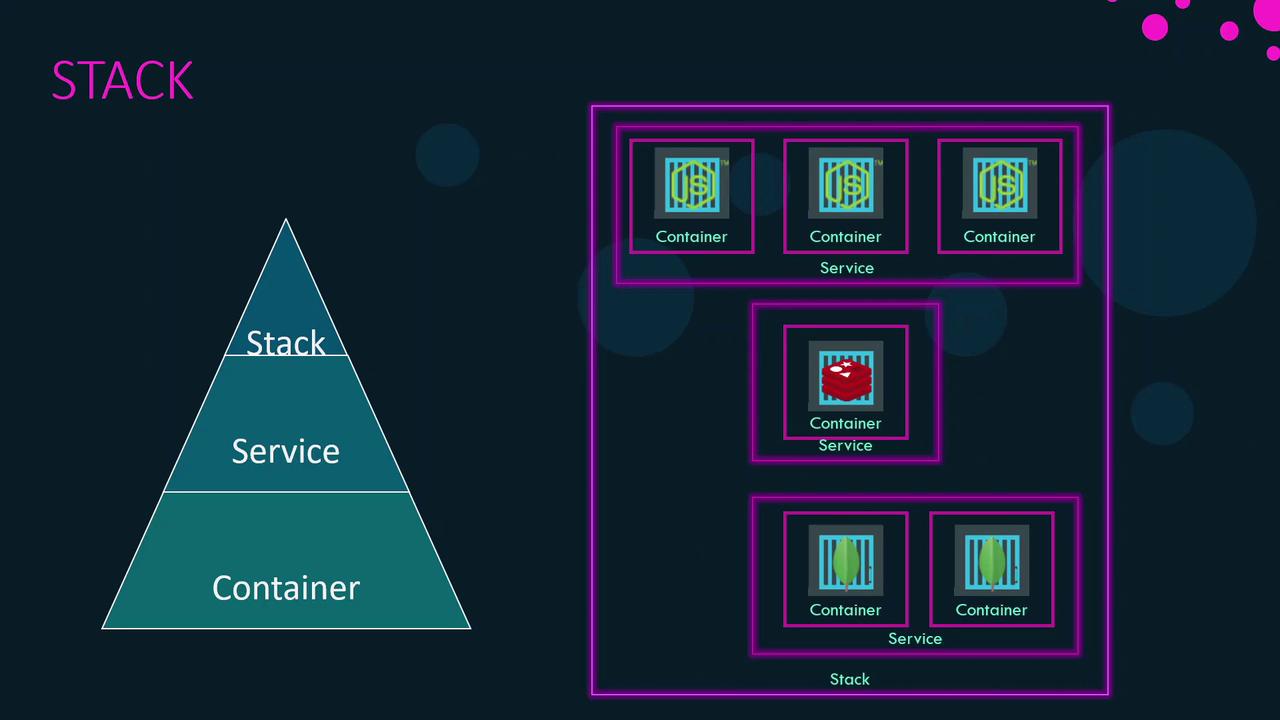Docker Certified Associate Exam Course
Docker Swarm
Docker Stack
In this comprehensive guide, you'll learn how to move from single-host Docker Compose deployments to robust, multi-node orchestration using Docker Stack on a Swarm cluster. We’ll compare docker run vs. Compose, introduce Docker Swarm concepts, and walk through a real-world voting application example—complete with replicas, placement constraints, resource limits, and health checks.
1. Docker Run vs. Docker Compose
When you start with containers, you often use docker run for each service:
docker run simple-webapp
docker run mongodb
docker run redis:alpine
However, for multi-service applications, Docker Compose simplifies management by defining services in a single YAML file:
# docker-compose.yml
version: "3"
services:
web:
image: simple-webapp
database:
image: mongodb
messaging:
image: redis:alpine
Launch all services together:
docker-compose up
This approach centralizes configuration but is limited to a single host.
2. Introducing Docker Swarm and Stacks
Docker Swarm enables clustering multiple Docker engines into a single, fault-tolerant Swarm cluster. Instead of docker run, you create services:
docker service create --name web simple-webapp
docker service create --name database mongodb
docker service create --name messaging redis:alpine
With Docker Stack, you can use your Compose file to deploy across the Swarm:
docker stack deploy --compose-file docker-compose.yml mystack
Note
Docker Stack uses the same Compose file format (v3+), so you can reuse your existing docker-compose.yml with minimal changes.
3. Containers, Services, and Stacks
- Container: A running instance of an image, isolated with its dependencies.
- Service: A scalable set of containers of the same image, distributed across Swarm nodes.
- Stack: A collection of related services that define an application.

4. Example: Voting Application
We’ll deploy a simple voting app with Redis, PostgreSQL, vote service, result service, and a worker.
4.1 Single-Host Deployment with Docker Compose
version: "3"
services:
redis:
image: redis
db:
image: postgres:9.4
vote:
image: voting-app
result:
image: result
worker:
image: worker
docker-compose up
All services run on your local Docker host.
4.2 Multi-Node Deployment with Docker Stack
Assume a Swarm with one manager and two workers. Enhance the Compose file with a deploy section for Swarm-specific settings.
4.2.1 Replicas
Scale services by defining replica counts:
version: "3"
services:
redis:
image: redis
deploy:
replicas: 1
db:
image: postgres:9.4
deploy:
replicas: 1
vote:
image: voting-app
deploy:
replicas: 2
result:
image: result
deploy:
replicas: 1
worker:
image: worker
deploy:
replicas: 1
Deploy the stack:
docker stack deploy --compose-file docker-compose.yml voting
4.2.2 Placement Constraints
Ensure critical services run only on manager nodes:
db:
image: postgres:9.4
deploy:
replicas: 1
placement:
constraints:
- node.role == manager
4.2.3 Resource Limits
Protect node resources by setting CPU and memory limits:
vote:
image: voting-app
deploy:
replicas: 2
resources:
limits:
cpus: "0.01"
memory: 50M
4.2.4 Health Checks
Automatically monitor container health:
vote:
image: voting-app
healthcheck:
test: ["CMD", "curl", "-f", "http://localhost"]
interval: 1m30s
timeout: 10s
retries: 3
start_period: 40s
deploy:
replicas: 2
resources:
limits:
cpus: "0.01"
memory: 50M
| Field | Description |
|---|---|
test | Command run inside the container to check health (e.g., curl). |
interval | Time between health checks (e.g., 1m30s). |
timeout | Maximum time to wait before marking a check as failed (e.g., 10s). |
retries | Number of consecutive failures before marking unhealthy (e.g., 3). |
start_period | Grace period before starting health checks (e.g., 40s). |
5. Common Stack Commands
| Command | Description |
|---|---|
docker stack deploy --compose-file <file> <name> | Deploy or update a stack |
docker stack ls | List all stacks |
docker stack services <stack_name> | List services within a specific stack |
docker stack ps <stack_name> | List tasks (containers) for a stack |
docker stack rm <stack_name> | Remove an entire stack |
Warning
Removing a stack stops and removes all associated services and containers. Use with caution in production environments.
References
Watch Video
Watch video content